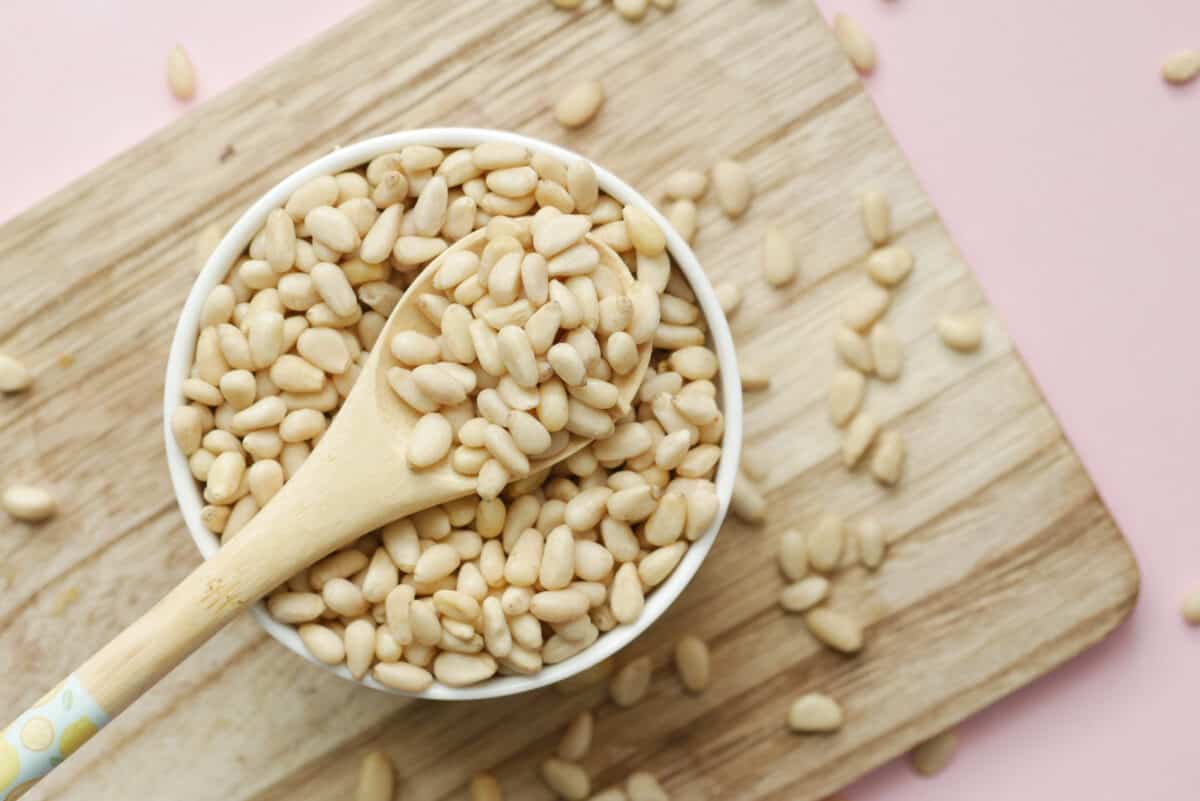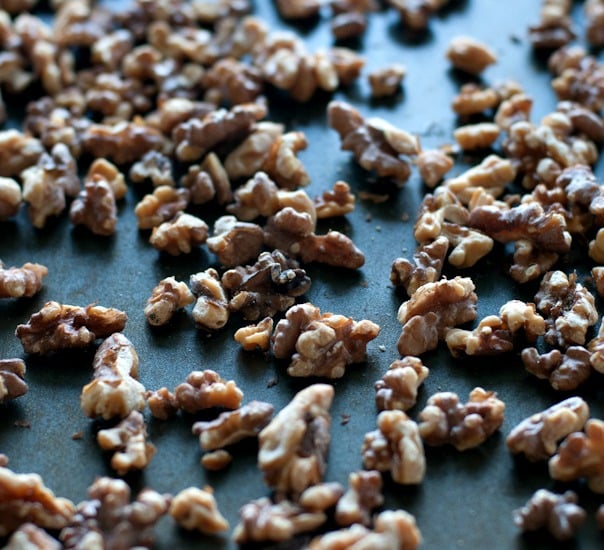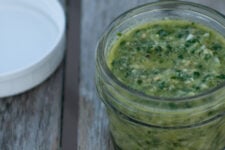Making pesto is a pretty straightforward process. Basil, garlic, pine nuts, olive oil, and parmesan come together in a food processor and you’re basically done. Season to taste, maybe make a few adjustments, but otherwise, you have pesto, ready for adding to your favorite pasta dish, dolloping onto pizza or soup, or simply spreading on a piece of crusty bread.

However, if you’ve made pesto recently, you’ve likely noticed that pine nuts are far from affordable. Nuts in general can be kind of pricey, but pine nuts in particular are expensive. (A quick Walmart price check shows that a 4 oz. bag of Great Value-branded pine nuts is just under $7; comparatively, a 4 oz. bag of chopped pecans is just under $4, and a 4 oz. bag of sliced almonds is just under $2.50.)
If you’re buying groceries on a budget, you may feel as if your only option is to kiss pesto goodbye — but luckily, just because pine nuts are the go-to for pesto, they’re not necessarily your only option. Here are six less expensive substitutes for pine nuts in pesto.

1. Pistachios
For a pesto, pistachios are a good replacement for pine nuts, although they lean a little sweeter than pine nuts. You may want to adjust your seasonings and the ratio of your other ingredients accordingly, if you’d prefer to avoid this slight flavor change.

2. White Beans
Beans? In your pesto? Yes! While white beans are definitely not a standard swap for pine nuts, when it comes to pesto, white beans can add to the dish’s creamy texture. This is an especially good swap if you’re looking for an overall nut-free pesto recipe.

3. Sunflower Seeds
Shelled (!) sunflower seeds are a cheap alternative to many nut varieties and can be used in place of pine nuts in pesto, though note that the pesto’s color might be slightly different. That said, sunflower seeds are a great nut-free alternative, if you’re cooking for anyone with allergies.

4. Walnuts
Walnuts are a popular pine nut substitute in pesto recipes. They’re cheap and flavorful. You’ll need to go an extra step if you use walnuts in your pesto, though; make sure to toast the walnuts before using them.
5. Cashews
Cashews are creamy, light, and very similar to pine nuts. They’ll blend well into your favorite pesto recipe.
6. Pumpkin seeds
Lastly, creamy and healthy pumpkin seeds make a beautiful nut-free pesto like this one from Fork in the Road. Use the green variety without shells (pepitas) when making pesto, and consider toasting the seeds a bit before using them in your pesto recipe.
Do You Really Need a Substitute?
It’s worth noting that it’s entirely possible to make a pesto without any pine nuts or any pine nut replacements. Simply follow your recipe and omit them. While the texture will be slightly different, the flavor will be very similar, and you might not even notice the change, particularly if you’re using the pesto in a large dish, with a lot of other flavors and textures, such as in a lasagna or on a pizza.
No Basil?
If you’re actually out of basil, not pine nuts (or both!), you can make pesto using other, flavorful, green ingredients. Mint, spinach, cilantro, parsley, arugula, radish greens — they all make suitable alternative options! You can even mix and match quantities of these ingredients, to craft a basil-free pesto recipe that matches your specific flavor preferences.







